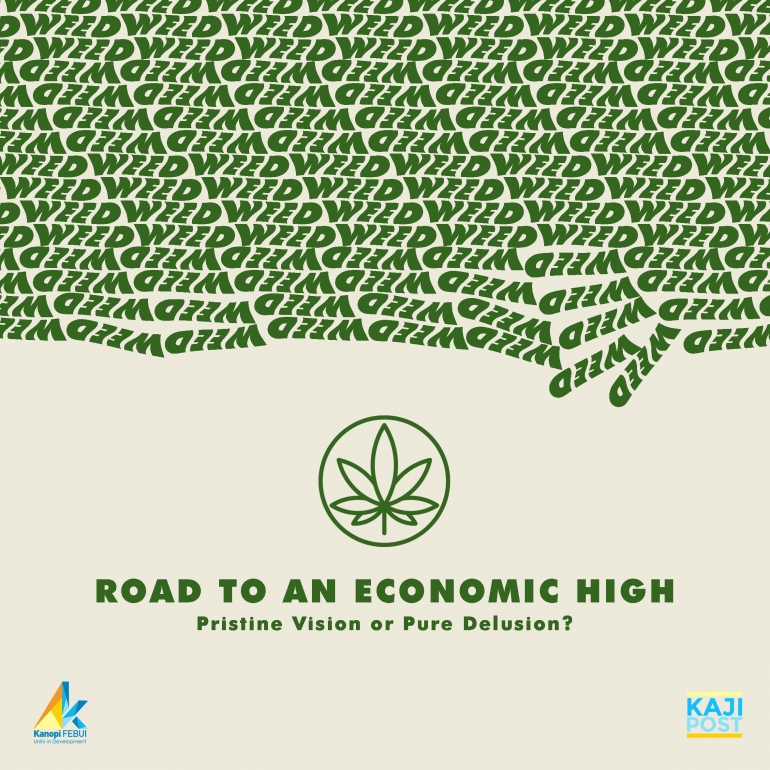This specific case and many other cases that exhibit some use and potential of the forbidden intoxicant drove part of the public to support the idea of legalization. A collective movement spearheaded by Dhira Narayana named "Lingkar Ganja Nusantara" strived for the legalization of the devil's lettuce so that Indonesians and mankind as a whole could reap the benefits of the herb. Its goal to raise awareness on the benefits harnessed by the said sinful plant has been sought after through radio publications, social media activities, and other methods with an end goal of gaining public support.
Despite all of their efforts, however, ganja legalization still isn't prioritized by the government. On the International Antidrug Day which was held on the 16th of July 2019, the national institution tasked to eradicate corruption BNN (Badan Narkotika Nasional) has made it clear that weed legalization is not and will never be in consideration as it is clearly stated in the constitution UU no.35 year 2009 on drugs that cannabis is included in the long list of prohibited substances and therefore any activities involving it is illegal.
Additionally, it was also made clear that any collective movement striving for hash's legalization is closely monitored. As with every rational decision made by rational human beings, one or multiple reasons must be taken into consideration by these political elites; including the multidimensional ganja legalization movement.
The economy, being one of the most fundamental aspects of societal living, ought to be heavily impacted by the possible legalization of weed. One might then ponder; if the legalization of the aforementioned prohibited laughing grass was to occur, what might be the costs and negative economic repercussions of unleashing the chains of regulations on the devil's lettuce?
Costs of flying high
Steps, albeit tentative ones, toward fully releasing the legal shackles on marijuana use have been done by some states in the "land of the free". Recreational uses of marijuana are legal for adults above the age of 21 in 11 states while medical uses are allowed in 30 states. Data and recent findings from the USA will be used to give reference for us to be able to visualize the possible economic reality of weed legalization. Despite the general image of an economic utopia, the utilization of marijuana by the masses does have some quintessential costs as can be seen from the USA's experience.
Honing in more on the recreational use of marijuana, studies from the USA have proven that finding tranquility by enjoying the forbidden herb does result in health complications. Firstly, it should be noted that findings from the state of Colorado exhibit that 3% of medical marijuana users have eventually continued their uses in the recreational sector (Lucas and Walsh, 2017).
The dangers of utilizing cannabis recreationally come from the addiction that has aroused in a collective of individuals. The risk of being dependent users (often referred to as CUD or Cannabis Use Disorder) is relevant for 9% of all marijuana users (Voklow et al. 2014) and an even more terrifying 25-50% of daily or near-daily users have to cope with the risk.
The costs in remedying these disorders are gargantuan as an average individual is expected to pay around $20,381.5 to set free from the addiction (Xiu, Yonkers, and Ruger, 2014; Mayo Foundation for Medical Education and Research, 2018; Advanced Recovery Systems, 2018). Those numbers translate to a total of $32 million needed to treat CUD diagnosed patients in Colorado in 2017.
As an essential part of the labor market, the economic repercussions of being a flneur are certainly relevant. Prior research has shown that marijuana legalization leads to higher use of marijuana (Wen, Hockenberry, and Cummings, 2015) of which have shown to have connections with the lowering of wages accepted by young adult males (Sabia and Nguyen, 2016). This phenomenon is explained by the higher amount of school dropouts experienced by marijuana users (Roebuck, 2004) and thus earn lower wages (Van Ours, 2007).
A recent study done by Dominic K. Albino in 2017 which utilizes panel data from 2000-2014 has shown results that policy changes towards the liberalization of marijuana decrease labor productivity. In the year following the policy change, labor productivity decreased by $1322 on average per employee. This amount is statistically significant when tested with a 5% significance level.











